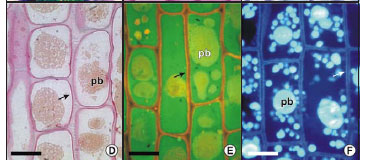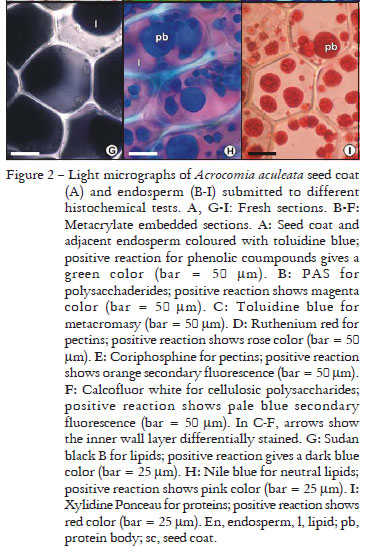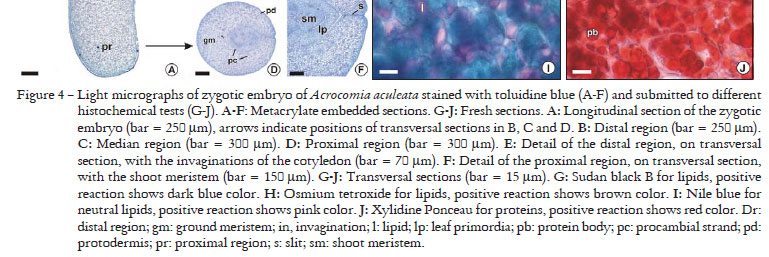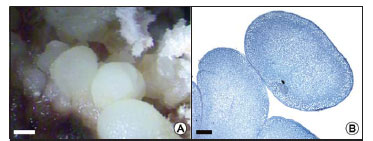Macaw palm (Acrocomia aculeata (Jacq.) Lodd. ex Mart.) is a tropical species with multiple uses, including oil supply for biodiesel production. However, structural and physiological studies of the seed are still scarce, as well as in vitro propagation techniques. The aim of this study was to characterize the anatomy, histochemistry and ultrastructure of the seed and the in vitro somatic embryo of A. aculeata, gaining insight into relationships between the post-harvest seed behavior and the somatic embryo conversion to plant. The zygotic embryo and the endosperm show high quantities of protein and lipids, stored in protein and lipid bodies, respectively. The cell wall storage polysaccharides occur in the thickened cell wall of the endosperm. The absence of vacuoles and the few organelles, except for the storage ones, indicate low metabolic state of the zygotic embryo, which suggests a orthodox behavior of the seed at maturity. The somatic embryo shows a shoot meristem with few leaf primordia, vacuolated cells and, occasionally, amyloplasts , but not lipid or protein reserves. These characteristics, common in somatic embryogenesis, could be associated with the maturation phase, and, consequently, with the low conversion of these embryos into plants.
macaw palm; zygotic embryo; endosperm; storage reserves

















